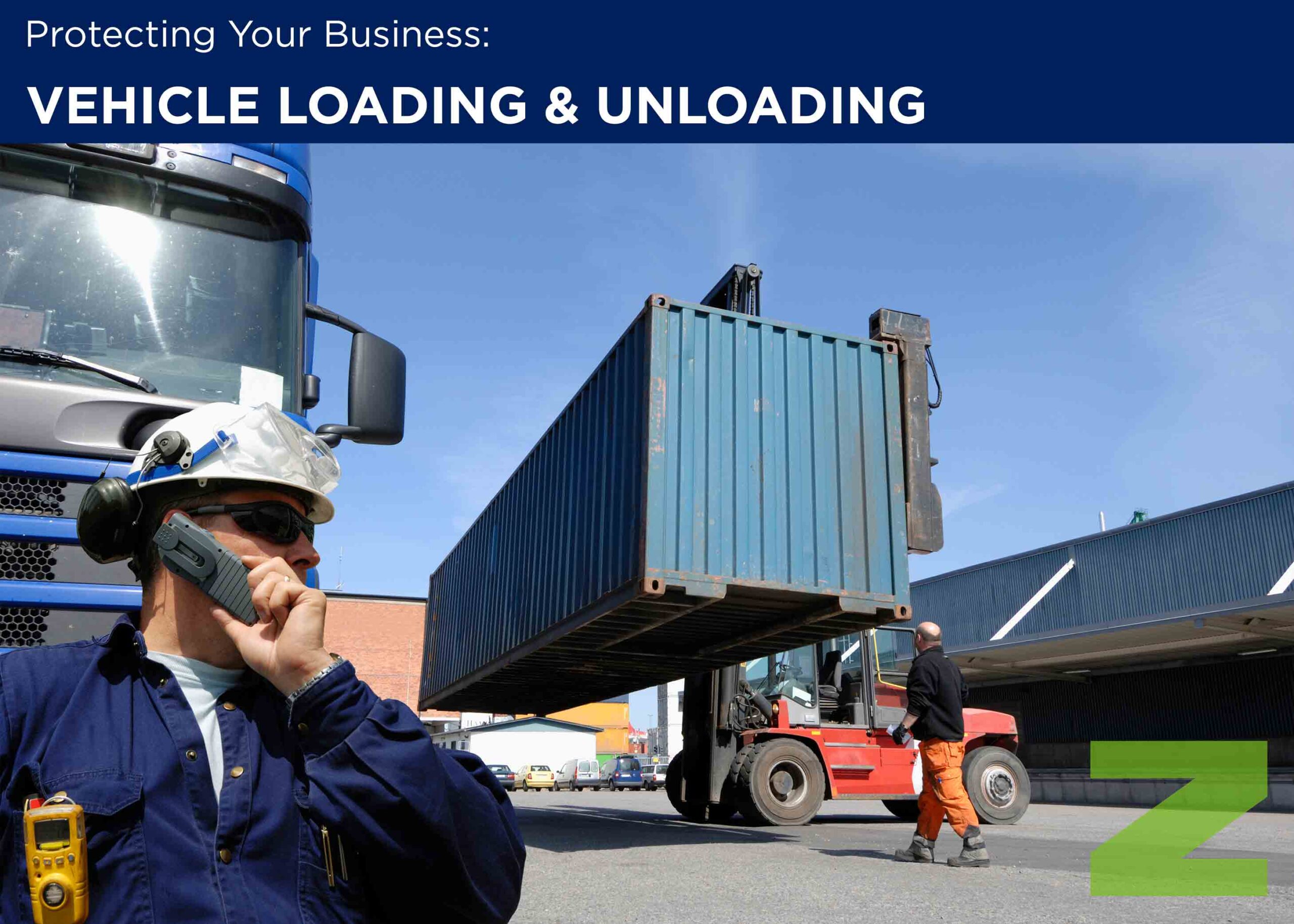Truck loading and unloading is a daily activity in many businesses. It is also a regular source of injuries to the driver, workers and visitors. There have been numerous losses caused by improper loading and unloading practices. Employers have a responsibility to ensure they maintain a safe working environment. Forklift operators are also responsible for the safety of others in the unloading area.
Many losses stem from materials falling off trucks and injuring drivers who are in close proximity to the vehicle during loading or unloading operations. This usually happens when a forklift operator is loading/unloading the materials from the opposite side of the truck from where the driver may be standing. The forklift operator does not have clear sight of the driver and in most cases is not even aware that the driver is on the opposing side of the vehicle. Pieces of lumber or even entire loads of materials can fall off the vehicle and strike the driver. This often results in serious personal injuries.
Accidents of this type can be easily prevented by establishing clear procedures in regards to loading/unloading.
ESTABLISH A LOADING/ UNLOADING AREA:
• Area should be level to help maintain stability of the truck and trailer. The ground should be free of potholes and debris.
• Area should be free of overhead electric lines.
• Area should be clear of other traffic – vehicles or foot. Pedestrians, the truck driver, or other employees not involved in the loading/ unloading process should be clear of the area.
• Area should have sufficient lighting for early morning or evening loading or unloading.
• If possible, the designated area should be a one-way route to prevent the need for vehicles to back up. If a driver is required to back the vehicle, a spotter should be used to protect pedestrians and property.
GUIDELINES FOR TRUCK DRIVERS:
• When unloading, the driver should proceed to the designated area and remove tarps, straps or other load securement devices. Secure this material so it is not an obstruction to the forklift operator during the unloading process.
• The driver should secure vehicle, apply brakes and turn off engine, as appropriate, to prevent unsafe movement during the loading/ unloading operation.
• The driver should proceed to a designated area (safe zone) located away from the truck and outside of the loading/unloading area. The driver should remain in that area during the operation.
- NO material should be loaded/unloaded, nor should any forklifts be operating in the area around the truck until the driver has completed all of the tasks above and moved to the designated safe zone.
GUIDELINES FOR FORKLIFT OPERATORS
• Operating a forklift should be limited to individuals who are trained and qualified to do so, including general forklift safety topics and equipment specific training. Initial training should be completed prior to authorization of the driver to operate the forklift. Refresher training should be completed every three years and following any forklift-related accident, property damage or near-miss incident.
• Have a clear understanding of the material being loaded/unloaded. Unloading a bunk of 2×4 is different from unloading laminated beams or a pallet of roof shingles.
• Check the load – Make sure that the load has not shifted, banding is still in place, and the overall load is in good condition and not likely to move or fall during the unloading process.
• No one, including other workers, should be on the opposite side of a truck from a forklift while it is moving material.
- EMPOWER your forklift driver to stop the loading/ unloading process if the location of the truck driver cannot be confirmed or someone else enters the loading/unloading zone.
While loading/unloading of material is an everyday activity at most operations, safety cannot be taken for granted. It is management’s responsibility to ensure that proper training and safe loading/ unloading procedures are in place and enforced.





